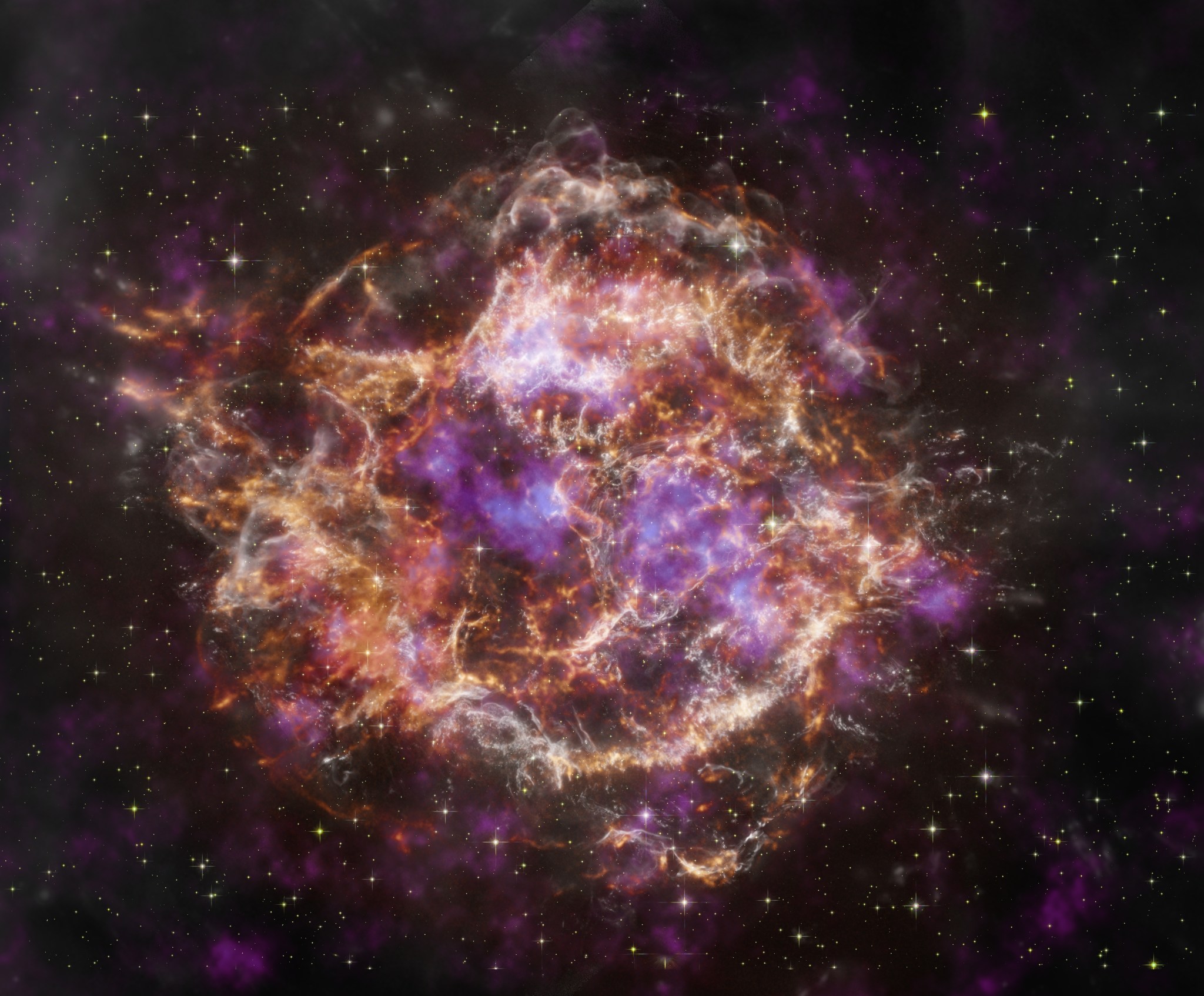Adding Dimension to Cassiopeia A
- Astronomers have discovered a mysterious feature within the Cassiopeia A supernova remnant using NASA’s James Webb Space Telescope, nicknamed the “Green Monster.”
- The Green Monster is part of a puzzling network of ejecta filaments forming a web of oxygen-rich material.
- When combined with X-rays from NASA’s Chandra X-ray Observatory, the data helped shed light on the origin of the Green Monster and revealed new insights into the explosion that created Cas A about 340 years ago.
- The discovery provides valuable information for understanding the end stage of a star’s life, similar to the Cygnus Loop, which can be explored using 3D printable models.
- These 3D models are based on state-of-the-art theoretical models, computational algorithms, and observations from space-based telescopes like Chandra, providing accurate pictures of cosmic objects and their evolution over time.

Using NASA’s James Webb Space Telescope, astronomers uncovered a mysterious feature within the remnant, nicknamed the “Green Monster,” alongside a puzzling network of ejecta filaments forming a web of oxygen-rich material. When combined with X-rays from NASA’s Chandra X-ray Observatory, the data helped astronomers shed light on the origin of the Green Monster and revealed new insights into the explosion that created Cas A about 340 years ago, from Earth’s perspective.
Like with the Cygnus Loop, Chandra has provided a 3-dimensional (3D) printable model that can be used to explore the end stage of a star’s life. These 3D models are based on state-of-the-art theoretical models, computational algorithms, and observations from space-based telescopes like Chandra that give us accurate pictures of these cosmic objects and how they evolve over time.
See more photos and get the files to print 3D models of cosmic objects.
Image credit: X-ray: NASA/CXC/SAO, NASA/JPL/Caltech/NuStar; Optical: NASA/STScI/HST; IR: NASA/STScI/JWST, NASA/JPL/CalTech/SST; Image Processing: NASA/CXC/SAO/J. Schmidt, N. Wolk, and K. Arcand
